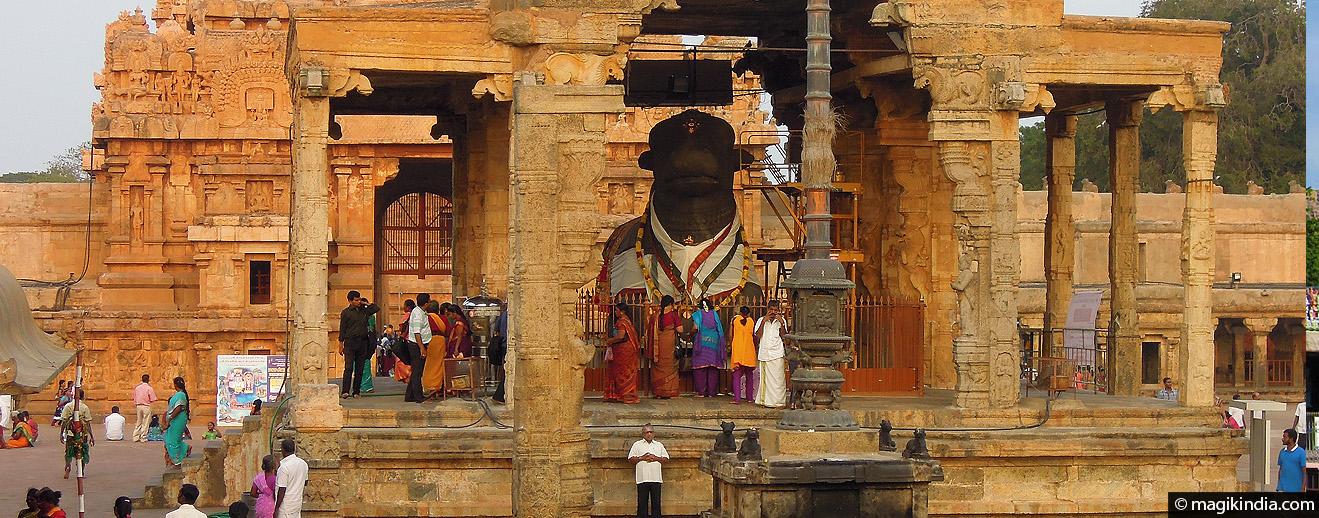
Thanjavur (Tanjore), capital of the Chola Empire
Thanjavur (Tanjore), once the capital of the Chola empire, is an important centre of South Indian culture ; The Tanjore style of painting originated here. The town boasts a Unesco-listed world heritage monument, a marvel of Dravidian architecture: Brihadeeswarar temple.
Brihadeeswarar (Peruvudaiyar Kovil temple)
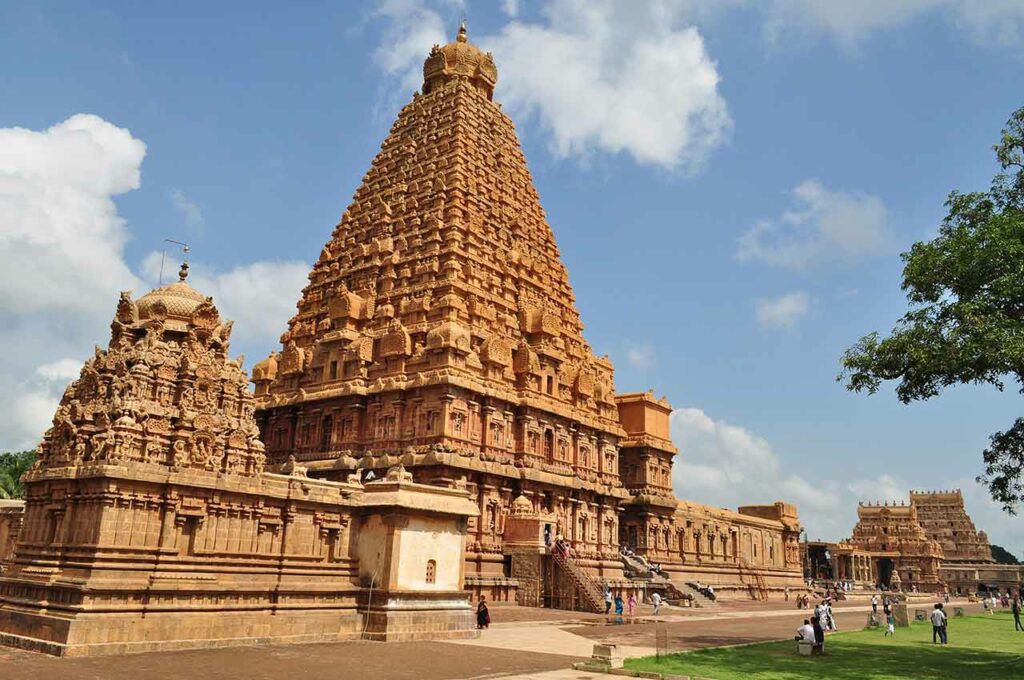
The Brihadeeswarar temple is dedicated to Shiva. It is one of India’s largest temples and was built by order of Raja Chola I in the 11th century CE. The architecture is impressively rich.
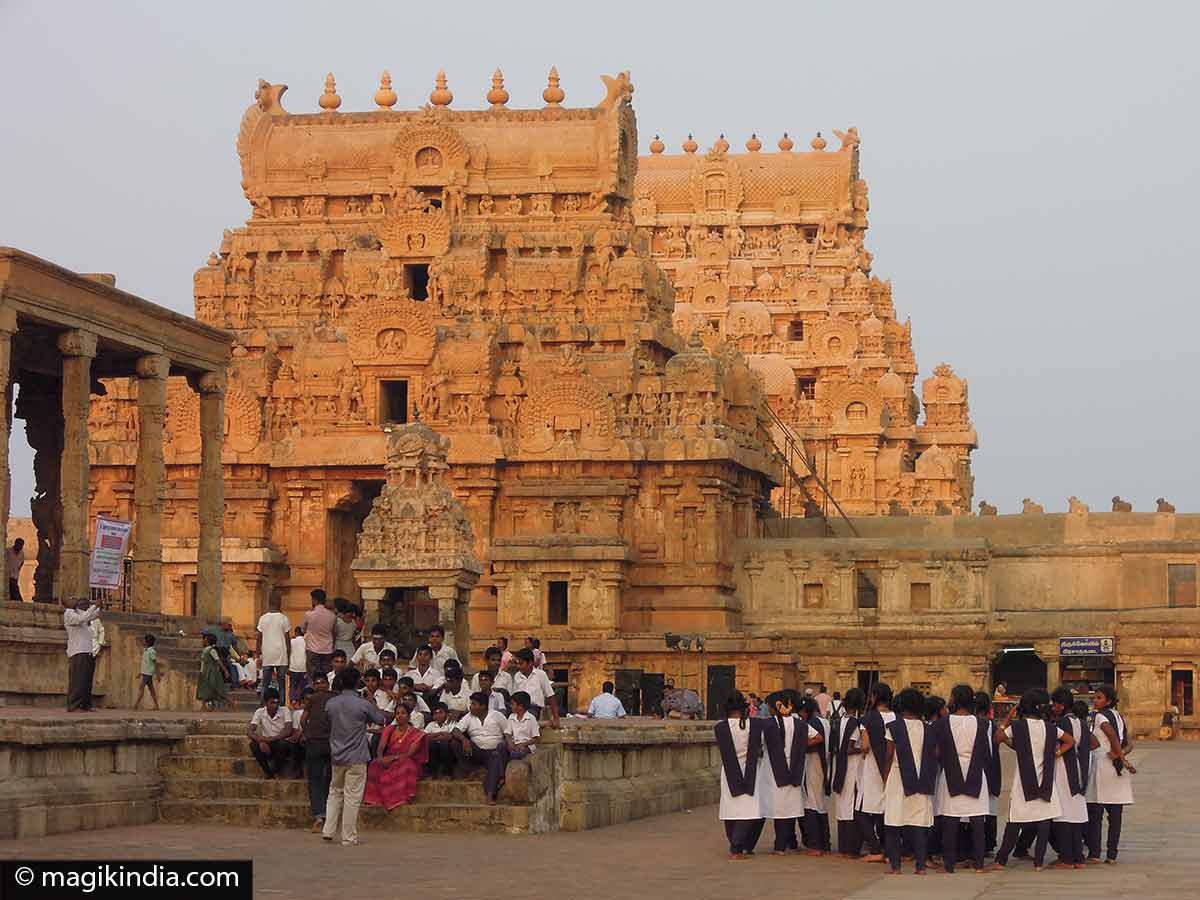
At the entrance to the temple stands a colossal statue of the holy bull Nandi, Shiva’s mount. It is 4m high by 6m long and weighs 25 tons. The inner sanctum houses a huge Shivalingam nearly 4m tall, which makes it one of the biggest in India. The temple tower or vimanan is 66m high. The bulbous top of the vimanan has been carved from a single block and is estimated to weigh about 80 tons.
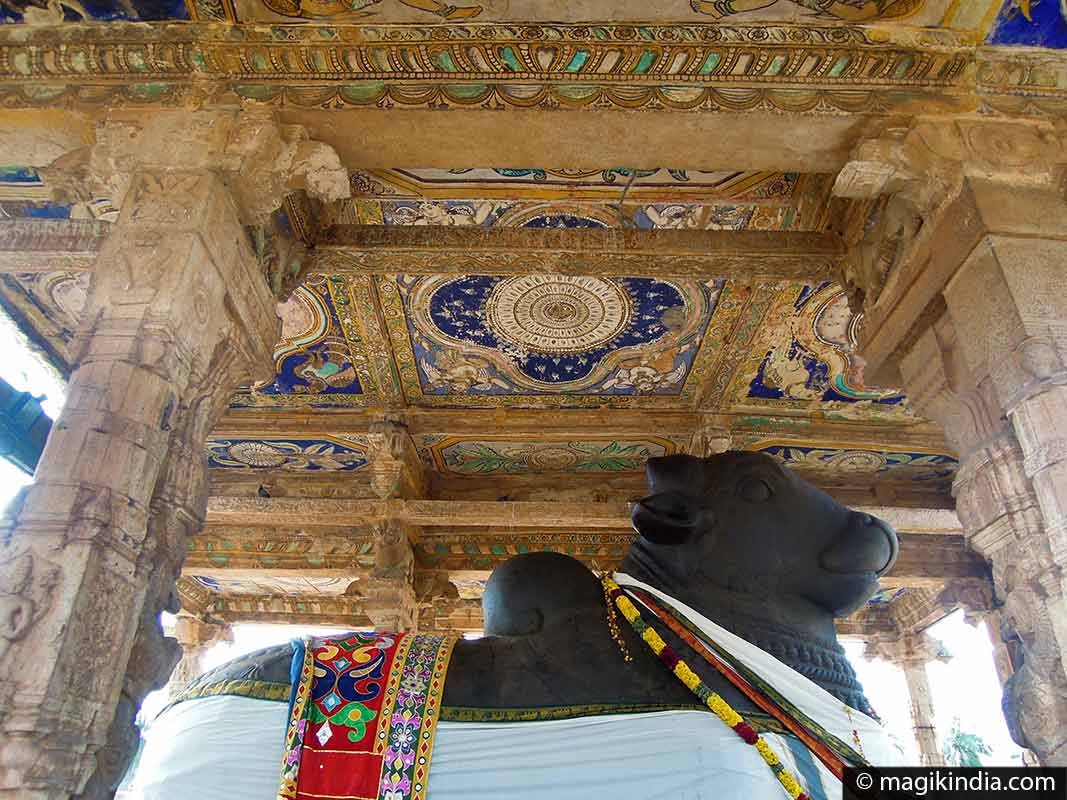
Near the Nandi statue is a fine 13th-century shrine to Amman.

In the days of the Chola empire, nearly 1000 people worked in the temple including 400 dancers of both sexes, so it is no surprise to learn that the temple made a major contribution to the local economy.
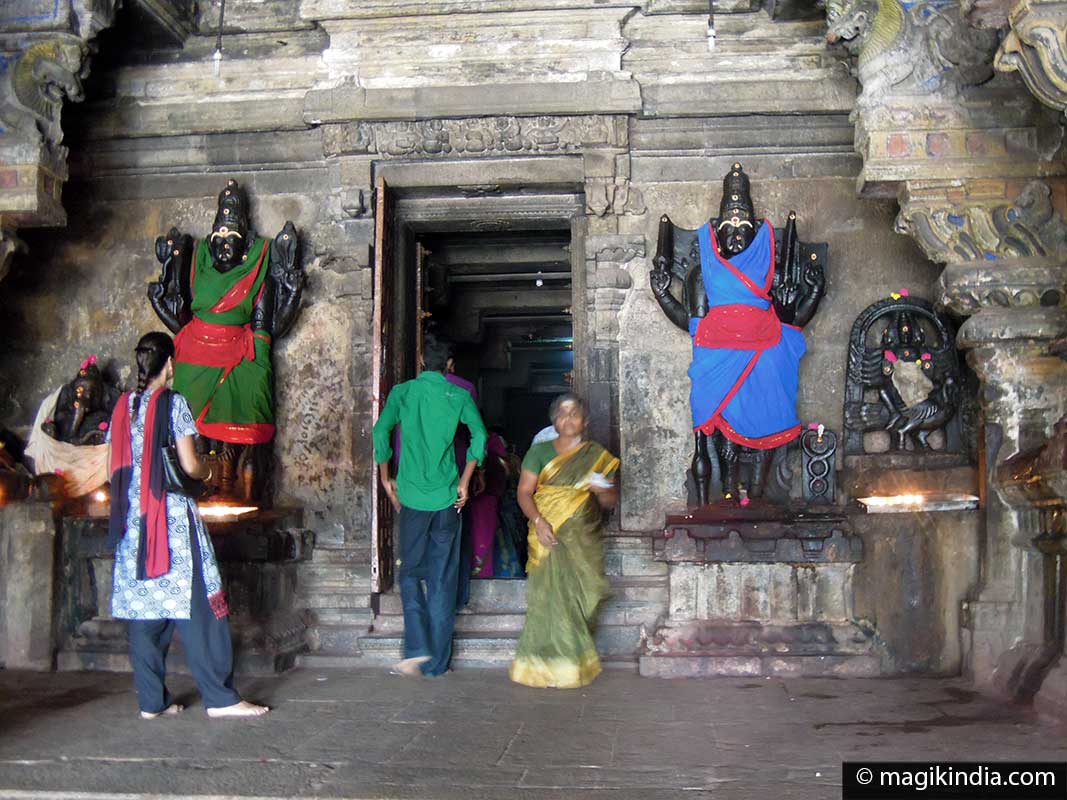
Thanjavur painting
The Tanjore painting style is a classical style of Indian painting that began in the town of Thanjavur.
It emerged around 1600CE in the time of the Nayak dynasty. Tanjore paintings are essentially religious; most represent Hindu gods or goddesses, Krishna especially, or Hindu saints.
To produce a Tanjore painting, a long sequence of steps must be scrupulously followed.

It is usually done on a panel of wood commonly called palagia padam (palagia means wooden board, padam means photo).
The first step is to stretch and glue a piece of fabric over the wood panel. Next, a mixture of powdered chalk and water-soluble glue is applied to the fabric.
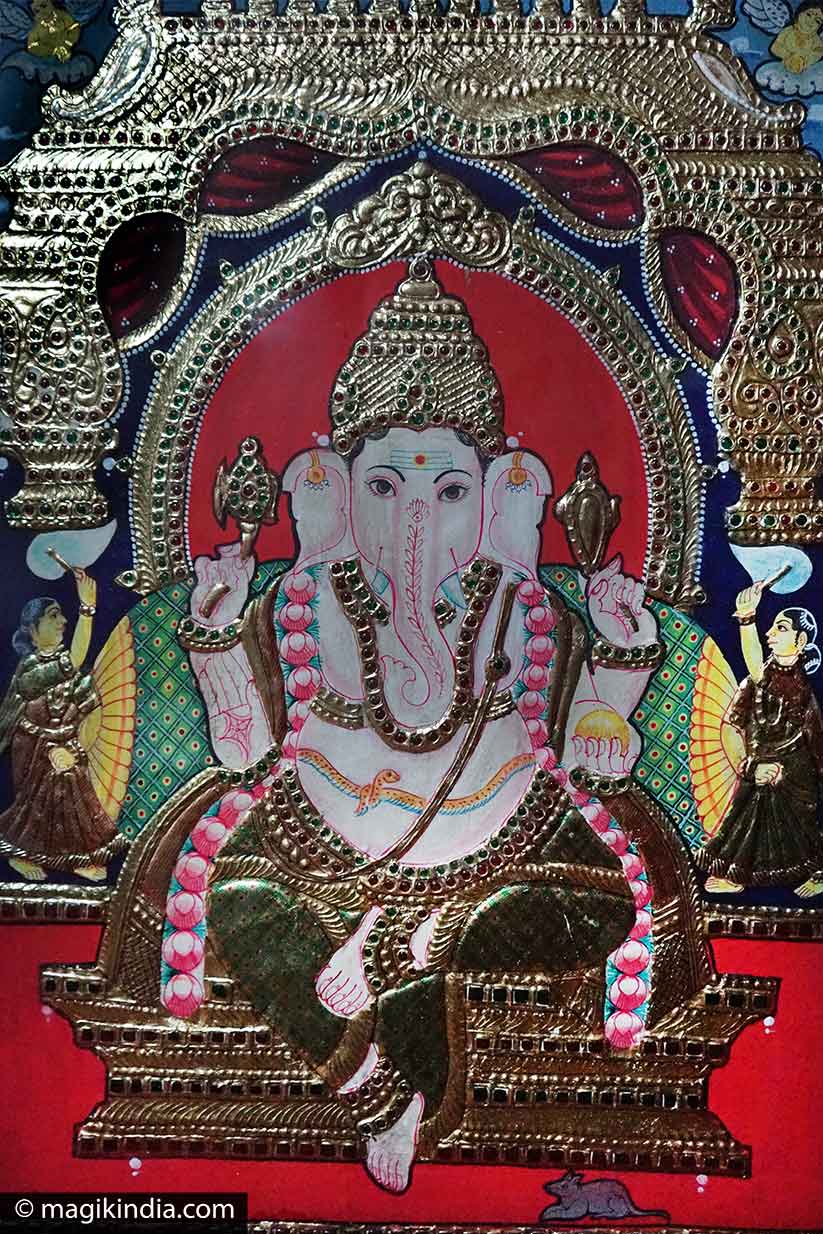
This paste provides a ground and is used to create relief shapes that give the picture depth. Precious gems are inlaid in areas of the picture like clothing, jewellery and architectural elements. Lace, wire and gold leaf are also used. Coloured paints are applied to clothes and background; the faces are painted last of all.
Thanjavur Royal Palace
Many visitors forget to visit the Thanjavur palace, it is nevertheless a visit that is really worth the trip, for its historical side of course, but also for its art gallery and its magnificent audience hall.
Thanjavur Palace was the residence of the Nayak kings. Built in the 16th century, it became in the 17th century the seat of the Marathas sovereigns and therefore it is often called ‘Maratha Palace’. The palace is actually a complex that consists of several parts:
Durbar Hall
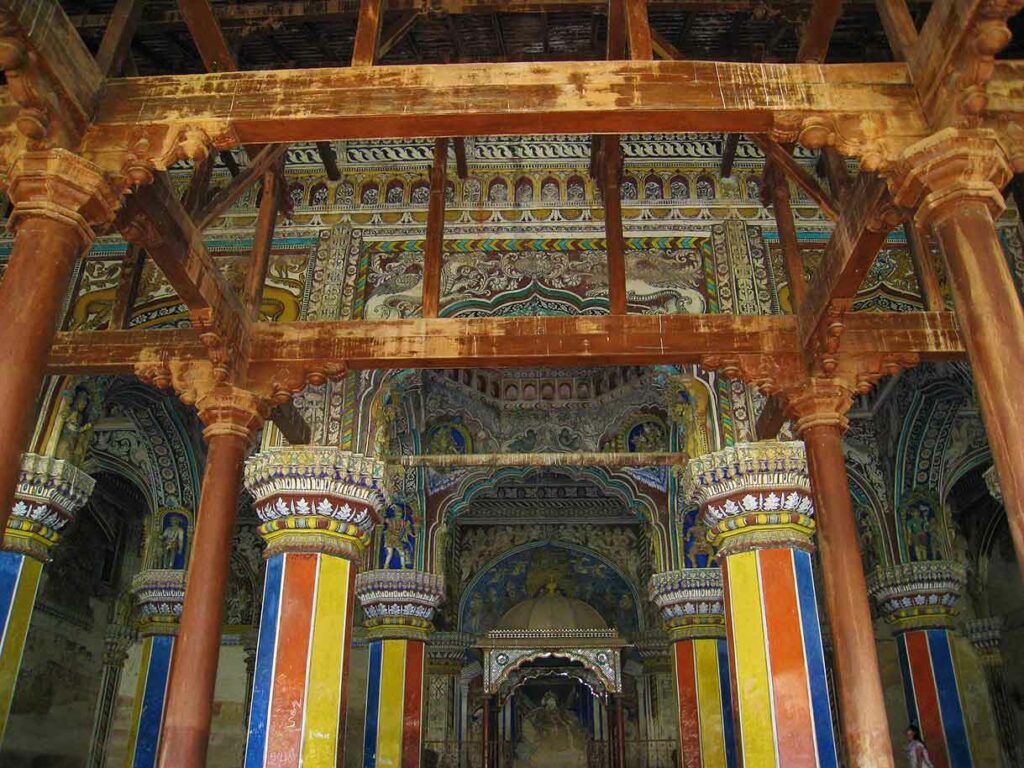
The Durbar Hall also called Lakshmivilasam is surely the most spectacular building in the complex. It was once used as a courtroom by the Marathi kings. This hall is covered with shimmering murals and stucco images from the Maratha era. The colourful octagonal columns, the magnificent arcades and the walls of the hall are adorned with deities.
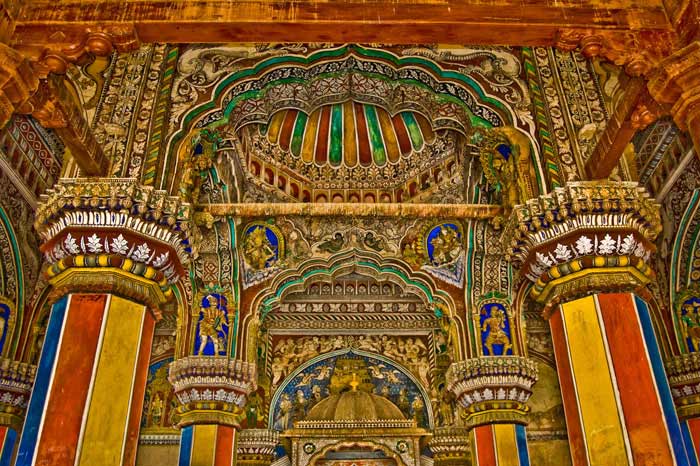
Raja Raja Chola Art Gallery
The other amazing place in the palace complex is its Raja Raja Chola art gallery which contains magnificent bronzes and stone statues from the Chola era.

Arsenal tower
The 60 m high arsenal tower is also called Indhira Mandhiram. It was the room of the Nayak kings and they used to stay in one of the seven floors of the tower. During the period of the Marathas kings, it was used to store weapons and ammunition and also serve as a watchtower.
Bell Tower
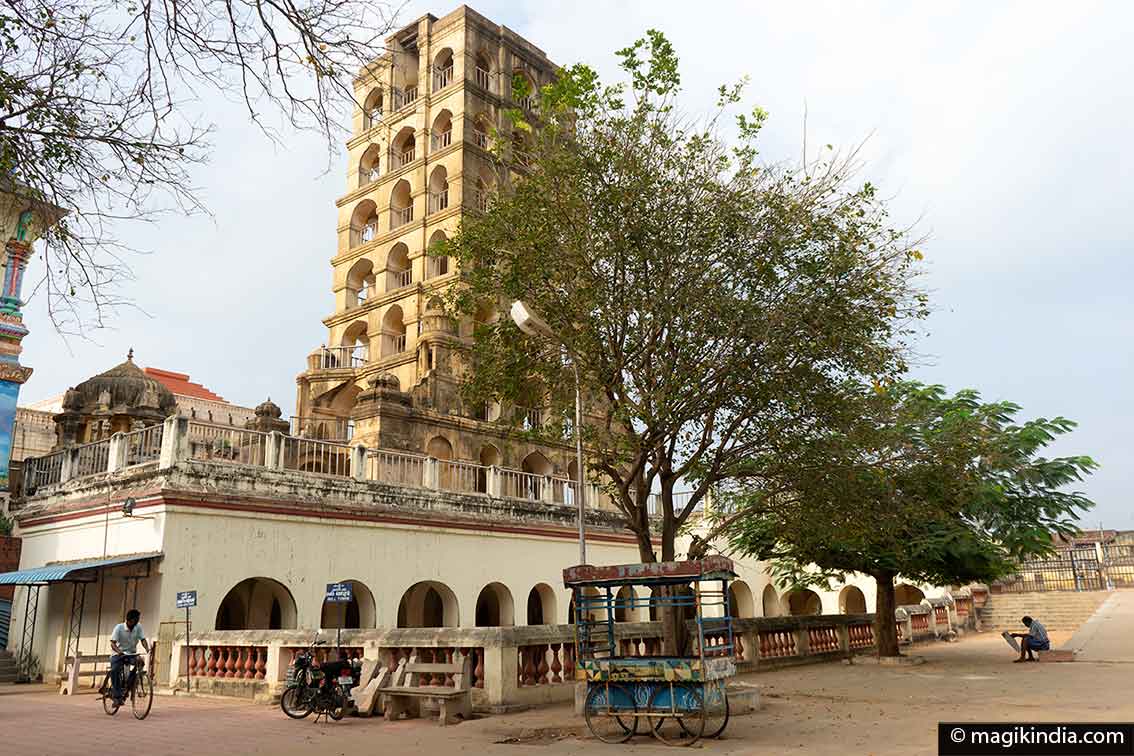
This tower is located to the northwest of the arsenal tower. Originally, it was used as a bell tower, to announce the time by blowing in conch shells. At the foot of the bell tower, a sculpture of Rajagopalaswamy was installed by the Nayak kings and the place was also used for discussions with poets and intellectuals.
Saraswati Library
‘Serfoji Saraswati Mahal’ library which exhibits among other things a rare collection of palm leaf and paper manuscripts written in Tamil, Hindi, Telugu, Marathi, English and other indigenous languages of India.
Natyanjali Dance Festival
Natyanjali Dance Festival: The Natyanjali Dance Festival is celebrated for a continuous period of five days on the propitious occasion of Mahashivratri. Dedicated to Lord Nataraj (dancing Shiva), the Natyanjali Dance Festival of Thanjavur provides the artists of indian classical dances with a wonderful opportunity to display their artistic skills and creative talents. The Natyanjali Dance Festival is organized within the sacred premises of the Brihadeeswarar temple.

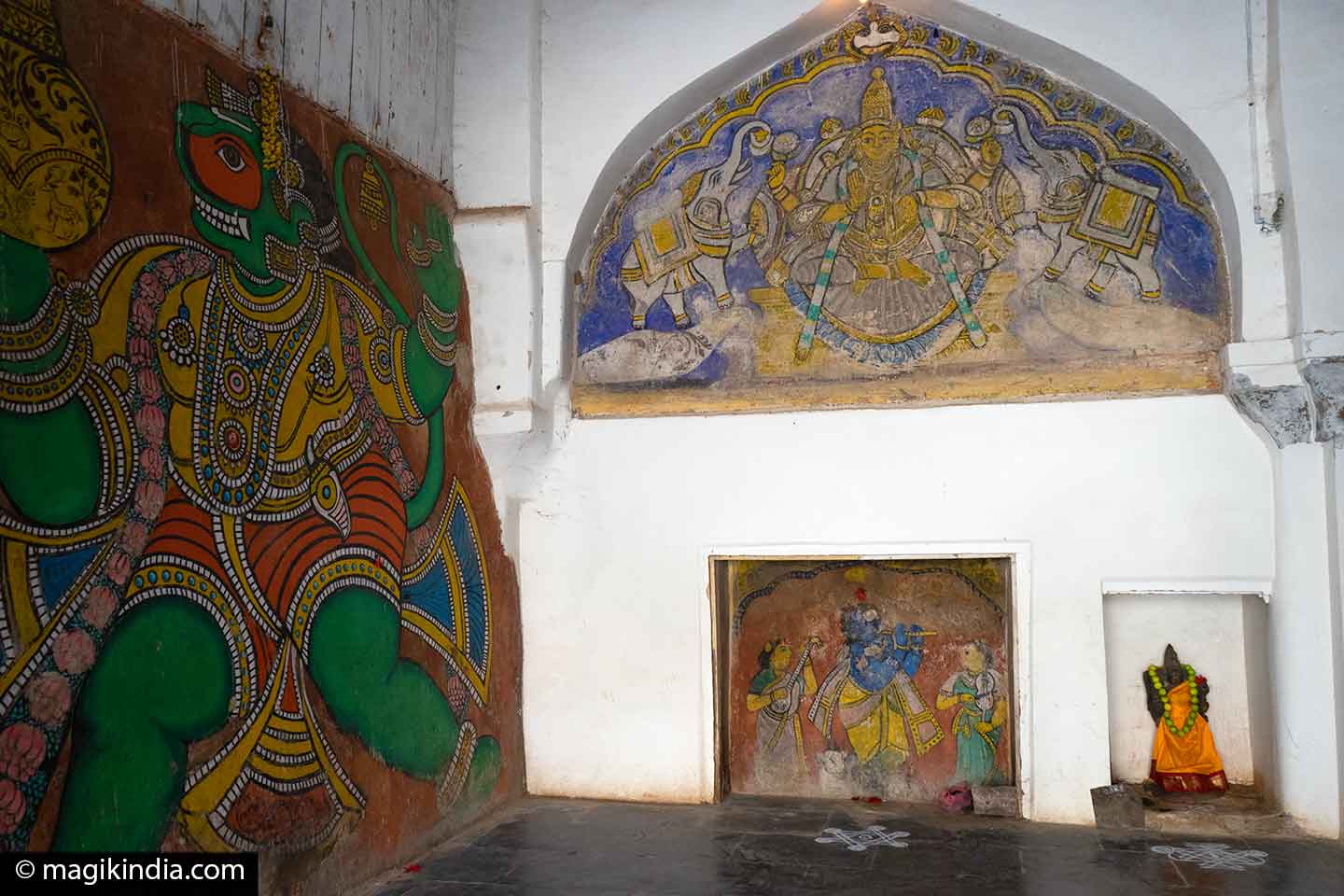


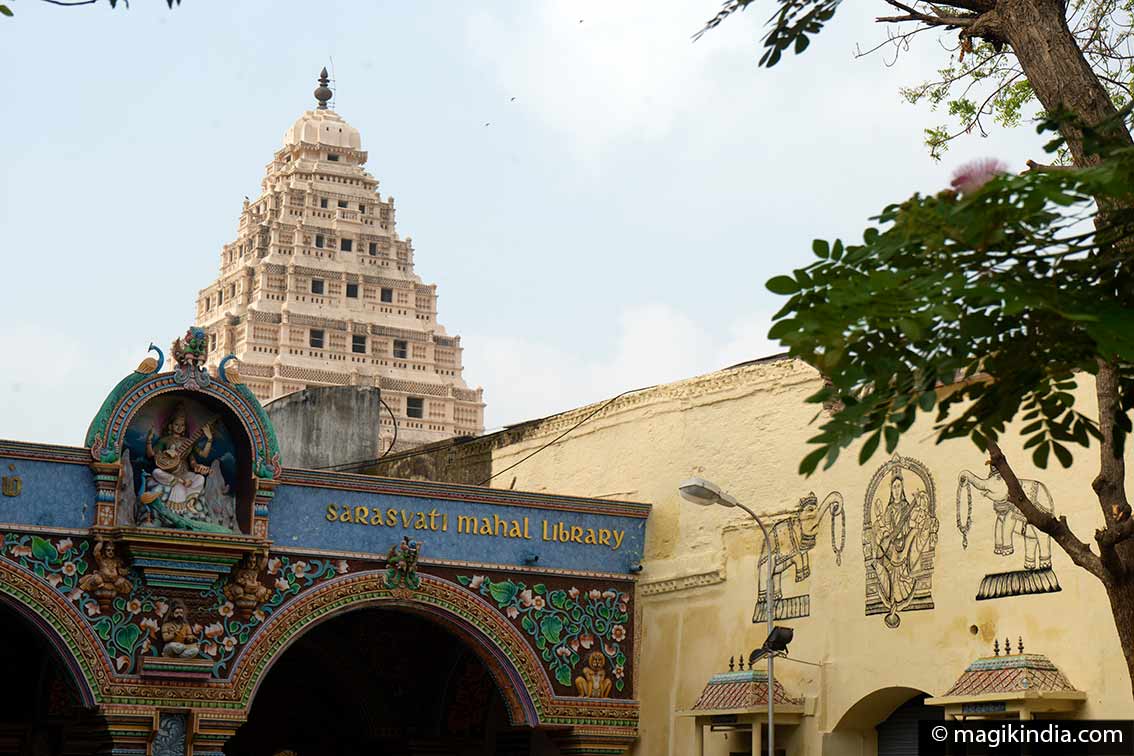





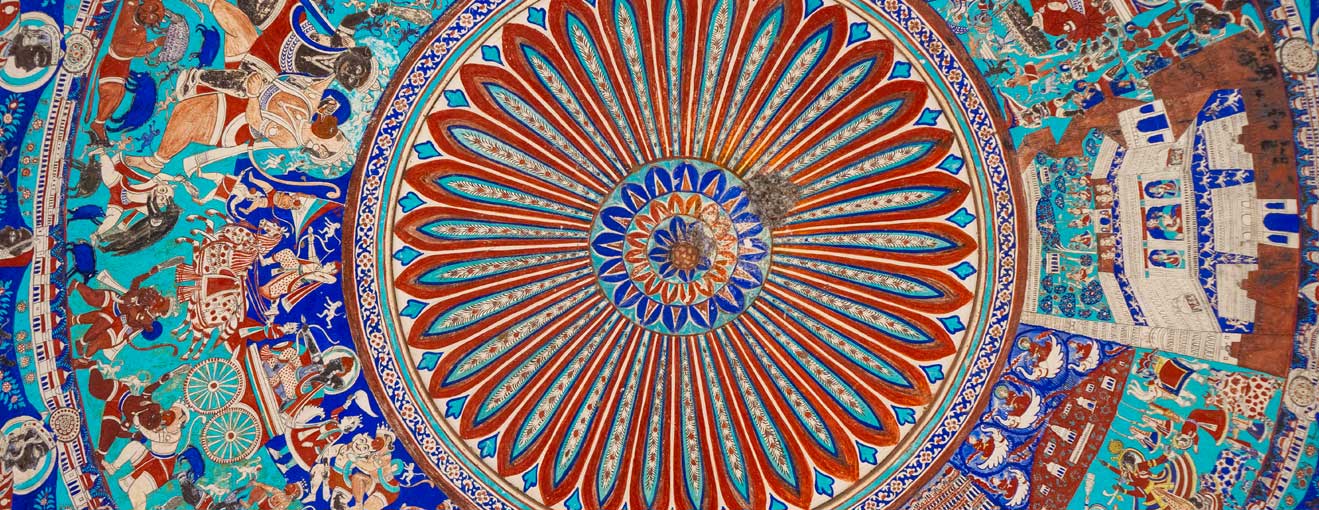

Excellent read .makes one one to visit there soon after the pandemic receeds.
I was researching town of Nanjikottai to see if there was a fort there.and why some put Nanji before their names
Thanks Daya ! 🙂 Yes Nanjikottai is close to Thanjavur but I don’t know about that “Nanji” before their names, please let me know if you find.Best regards. Mathini